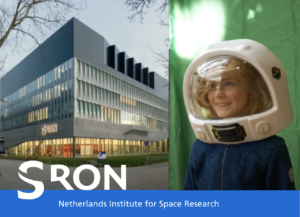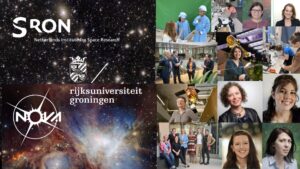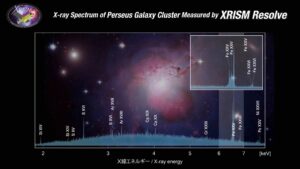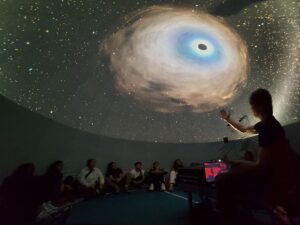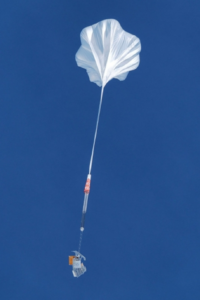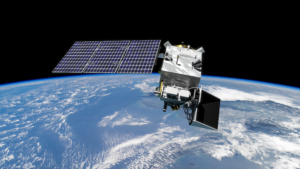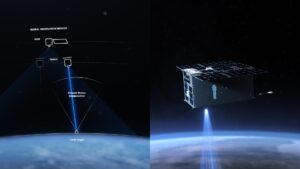Stap jij in oktober ook in de wereld van het Ruimteonderzoek met SRON Netherlands Institute for Space Research? We houden dan weer leuke open dagen. Op zaterdag 5 oktober bij SRON in Leiden, en op zondag 6 oktober bij SRON, Kapteyn Institute en NOVA in Groningen. Zet ze vast in je agenda! Wat doen we? …
Category: News items
Girls’ Day 2024: 57 meiden duiken in het ruimteonderzoek
Op donderdag 11 april 2024, tijdens Girl’s Day, duiken 57 meiden van drie middelbare scholen rond Leiden en Groningen in het Nederlandse ruimteonderzoek bij SRON, Kapteyn Instituut en NOVA. Girls’ Day, op nog veel meer plekken in heel Nederland, is een initiatief van VHTO voor schoolmeiden van 10 tot 15 jaar. Het doel is om …
Röntgentelescoop XRISM start wetenschappelijke observaties
De Japanse röntgentelescoop XRISM is officieel begonnen aan haar wetenschappelijke missie. Na de lancering op 7 september 2023 onderging XRISM een reeks testen, die nu zijn afgerond. Samen met deze mijlpaal heeft het team twee nieuwe afbeeldingen vrijgegeven. SRON heeft bijgedragen aan XRISM door het filterwiel inclusief kalibratiebron te leveren voor het Resolve-instrument.
NOVA breidt Mobiel Planetariumproject uit – SRON-koepel officieel in gebruik
Op zondag 3 maart is het derde mobiele planetarium van de Nederlandse Onderzoekschool voor Astronomie (NOVA) officieel in gebruik genomen — het SRON-planetarium. Dat gebeurde op de alumnidag van Stichting IMC Weekendschool op Nyenrode Business Universiteit in Breukelen. Het evenement markeerde ook de start van een project om met de opblaasbare sterrenhemels meer kinderen in wijken met sociaaleconomische achterstand en op het platteland te bereiken.
Ballontelescoop GUSTO landt op Antarctica na recordvlucht
Na een recordvlucht van 57 dagen, 7 uur en 38 minuten boven Antarctica voltooide NASA’s ballontelescoop GUSTO haar missie met een parachutelanding op het ijs. De missie was ontworpen voor 55 dagen in de lucht. GUSTO heeft spectra verzameld van gas- en stofwolken in onze Melkweg en een naburig sterrenstelsel met ver-infrarood camera’s, ontworpen door SRON en TU Delft.
Twee NWO-GO subsidies voor onderzoek naar aerosolen met PACE-satelliet
SRON-wetenschappers Otto Hasekamp en Bastiaan van Diedenhoven hebben beiden een NWO-GO subsidie ontvangen voor onderzoek naar aerosolen in de aardatmosfeer. Ze gebruiken data van NASA’s PACE-klimaatsatelliet, die op 8 februari is gelanceerd met aan boord het Nederlandse aerosol-meetinstrument SPEXone.
ESA kiest Nederlands satellietsysteem voor lokale emissiemonitoring
De Europese ruimtevaartorganisatie (ESA) heeft groen licht gegeven voor de realisatie van de Nederlandse TANGO-satellieten. TANGO meet op bronniveau de broeikasgasuitstoot van o.a. energiecentrales, kolencentrales, vuilnisbelten en fabrieken. De Nederlandse voorganger TROPOMI speurt al sinds 2017 wereldwijd het broeikasgas methaan op en kan zo’n 5% van de uitstootbronnen in beeld brengen. Met de opvolger TANGO wordt dat zo’n 75%. Bovendien gaat TANGO emissies meten van CO2, het gas dat wereldwijd goed is voor de grootste broeikasgas uitstoot. De satellieten worden ontwikkeld door de Nederlandse partijen ISISPACE, TNO, SRON en het KNMI. TANGO kan naar verwachting vanaf begin 2027 gelanceerd worden.

